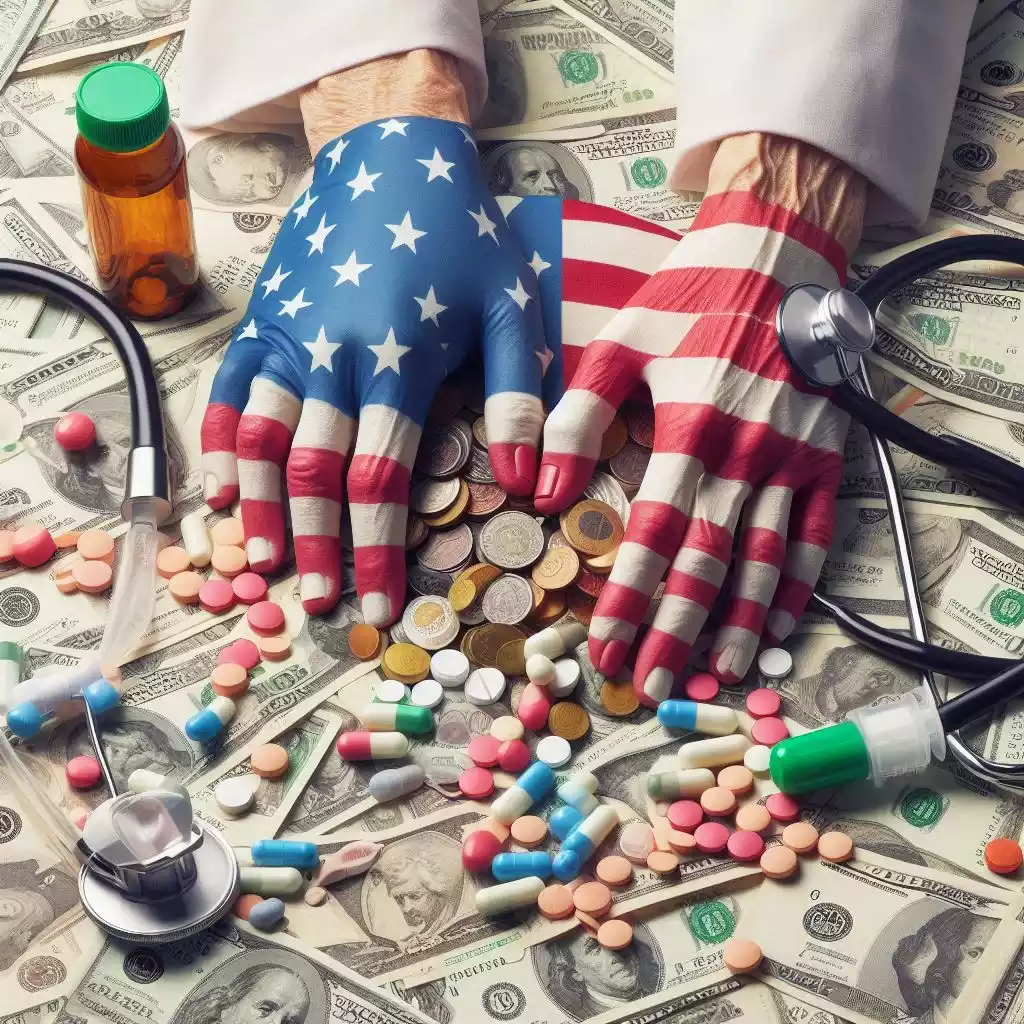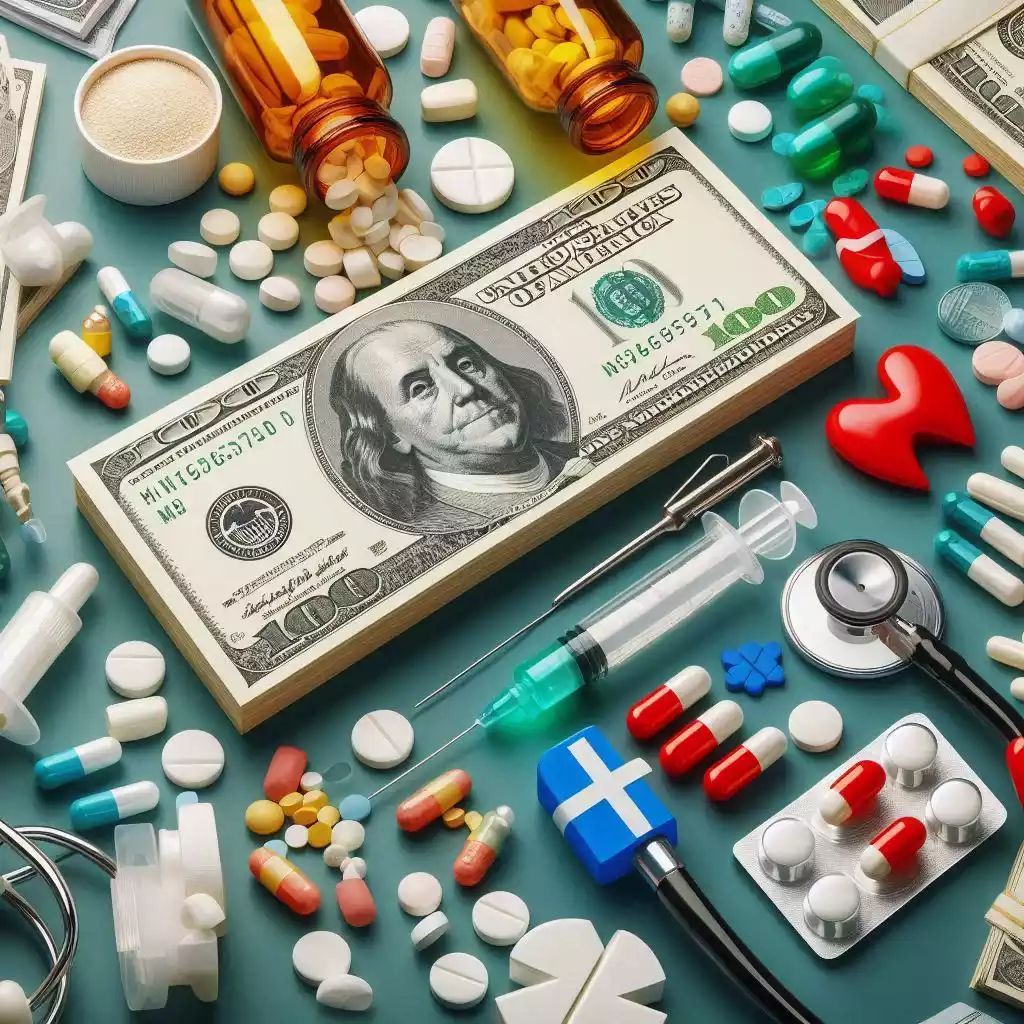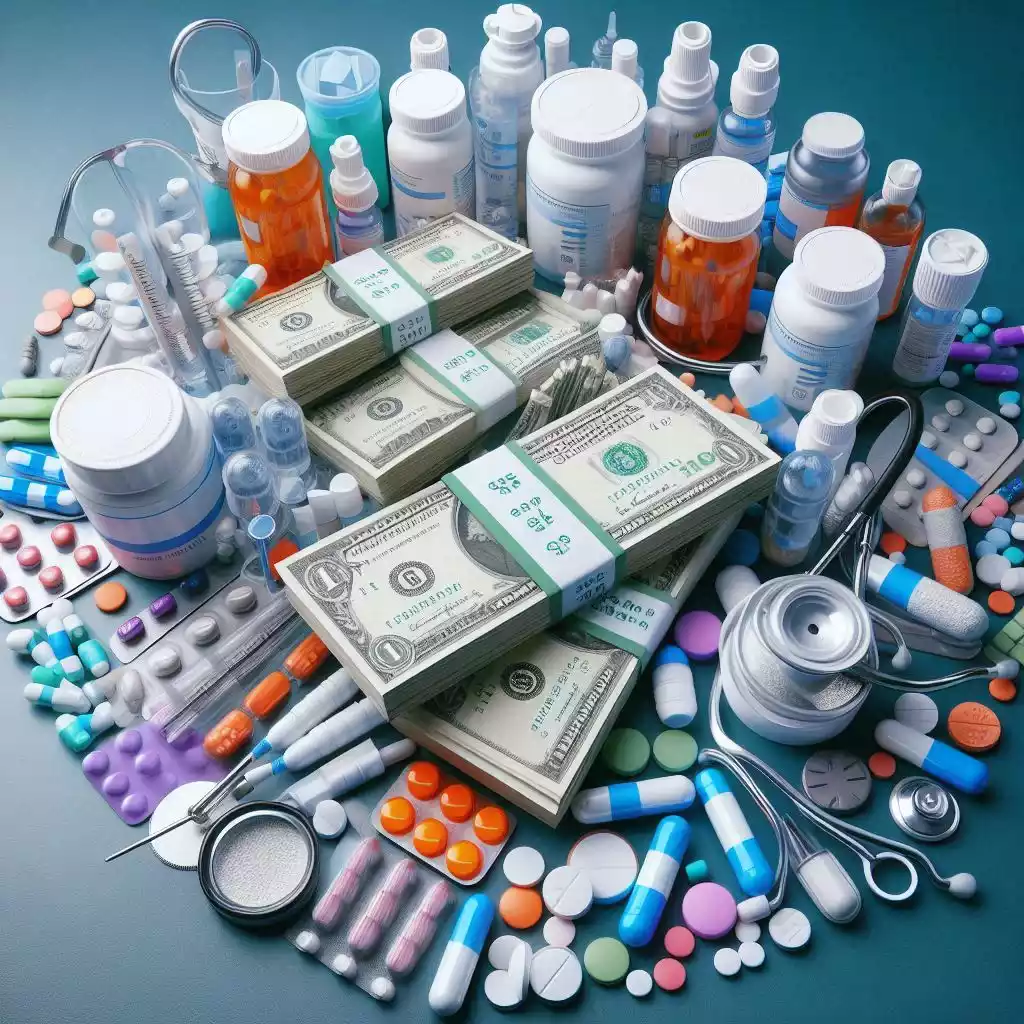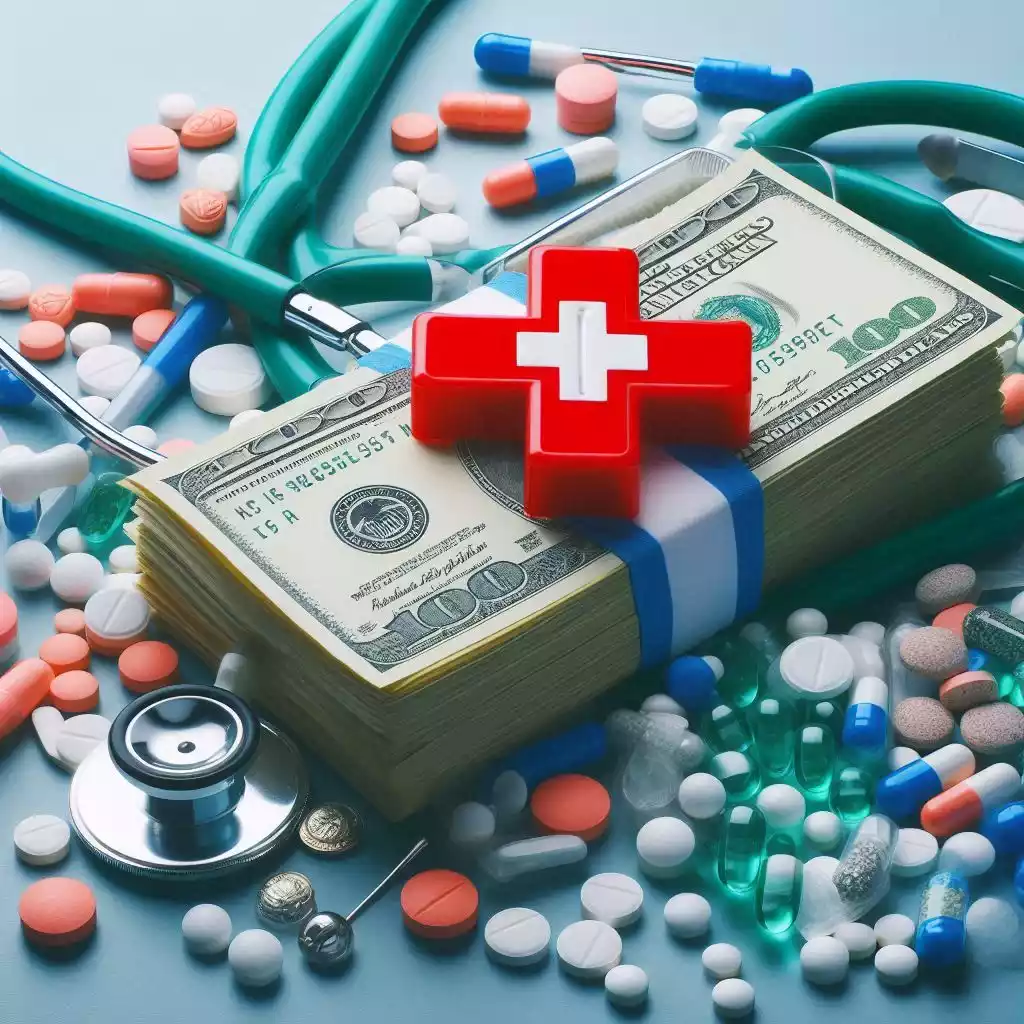Access to affordable healthcare is a cornerstone of a healthy society, but in the United States, the escalating costs of life-saving drugs and treatments for serious health issues paint a troubling picture. For millions of Americans, the cost of medicines can mean the difference between life and death, as the burden of high prices continues to rise. In this article, we delve into the root causes, consequences, and potential solutions to address this growing crisis.
The Growing Burden of Medical Expenses
For patients battling severe illnesses such as cancer, diabetes, cardiovascular diseases, and rare genetic disorders, the costs of life-saving medications are often exorbitant. A significant portion of these drugs is priced so high that even insured patients struggle to afford them. According to recent studies, over 25% of Americans have skipped doses of prescribed medications or delayed treatment due to financial constraints.
The financial burden often falls hardest on vulnerable populations, such as seniors living on fixed incomes, uninsured individuals, and families with children requiring chronic treatment. For example, a study by the Kaiser Family Foundation found that out-of-pocket spending on prescription drugs has steadily increased over the years, further deepening the economic divide in healthcare access.
Moreover, the ripple effects of high drug costs are felt across society. Employers face increased insurance premiums, driving some to reduce coverage options or shift costs to employees. For governments, programs like Medicare and Medicaid are strained under the pressure of ballooning pharmaceutical expenses, contributing to budgetary deficits and raising questions about long-term sustainability.
Why Are Medicines So Expensive?
- Patent Monopolies: Pharmaceutical companies hold patents on new drugs, granting them exclusive rights to manufacture and sell the product for years. This monopoly allows companies to set prices without competition. The result is often a lack of affordable alternatives for patients, as generic versions cannot enter the market until patents expire.A glaring example is the hepatitis C drug Sovaldi, which debuted with a price tag of $84,000 for a 12-week course. The drug’s patent protection prevented generics from being available, leaving patients and insurers with no choice but to bear the high cost.
- Research and Development (R&D) Costs: Drug manufacturers often cite the high cost of R&D as justification for their pricing. While it’s true that developing a new drug requires significant investment—often billions of dollars—critics argue that prices are often inflated beyond recovery costs. Moreover, many breakthroughs stem from publicly funded research, raising ethical questions about the justification for sky-high prices.

- Lack of Pricing Regulations: Unlike many countries, the U.S. does not have strict regulations on drug pricing. Pharmaceutical companies can set their own prices without government oversight, often prioritizing profits over accessibility. In contrast, countries like Canada and the United Kingdom negotiate prices directly with manufacturers, ensuring affordability for their citizens.
- Middlemen and Markups: The complex supply chain involving pharmacy benefit managers (PBMs) and wholesalers contributes to inflated prices by adding multiple layers of markups. PBMs, in particular, play a significant role in determining drug prices by negotiating rebates and discounts that often benefit their own bottom line rather than consumers.
- Marketing and Lobbying Expenses: Companies spend billions on marketing their drugs and lobbying policymakers. These costs are often passed down to consumers, further driving up the prices of medications. In 2021 alone, pharmaceutical companies spent over $350 million on lobbying efforts in Washington, D.C., a testament to their influence over healthcare policies.
Variation in State Medical Rules and Their Impact
Each U.S. state has its own set of medical regulations, which influence drug pricing, accessibility, and insurance coverage. Here are examples of how state-specific policies play a role:
- California: The state has implemented price transparency laws that require pharmaceutical companies to justify significant price increases. This regulation aims to hold manufacturers accountable and encourage competitive pricing.
- Massachusetts: Known for its pioneering healthcare reforms, Massachusetts limits out-of-pocket costs for certain medications, particularly those treating chronic illnesses like diabetes.
- Texas: In contrast, Texas has fewer regulations on pharmaceutical pricing, leaving patients more vulnerable to high drug costs. However, the state has expanded access to discount programs for low-income families.
- New York: The state’s Medicaid program employs a “prescription drug cap,” negotiating directly with manufacturers to secure lower prices for high-cost medications.
- Florida: Florida has embraced importation programs, allowing residents to access cheaper prescription drugs from Canada. While still in its early stages, this initiative highlights the state’s efforts to address affordability issues.
Notable Hospitals and Their Role in Mitigating Costs
Major hospitals across the U.S. are taking steps to alleviate the burden of high drug costs on patients. Here are some leading institutions and their initiatives:
- Mayo Clinic (Minnesota): This renowned institution has launched patient assistance programs to subsidize medication costs for uninsured and underinsured patients.
- Johns Hopkins Hospital (Maryland): Known for its research excellence, Johns Hopkins has partnered with pharmaceutical companies to provide access to experimental drugs at reduced costs for eligible patients.
- Cleveland Clinic (Ohio): Cleveland Clinic’s pharmacy program offers generic alternatives and educates patients on cost-saving strategies.
- UCLA Medical Center (California): As part of its community outreach, UCLA runs initiatives to provide free or low-cost medications to underserved populations.
- Houston Methodist Hospital (Texas): The hospital’s charity care program helps cover the cost of essential drugs for patients who meet financial hardship criteria.

Life-Saving Drugs That Cost a Fortune
- Insulin: Essential for managing diabetes, insulin prices have skyrocketed over the years. Many diabetics face financial strain, with some resorting to rationing their doses. According to a Yale study, one in four diabetics in the U.S. has reported insulin rationing due to cost, a practice that can lead to severe complications or death.
- Cancer Treatments: Drugs like Gleevec and Keytruda, used to treat leukemia and melanoma, can cost patients tens of thousands of dollars annually. For many families, these treatments are financially devastating, often requiring second mortgages or dipping into retirement savings.
- Gene Therapy: Revolutionary treatments like Zolgensma, used for spinal muscular atrophy, carry price tags of over $2 million per patient. While these therapies represent groundbreaking advancements in medicine, their affordability remains a significant hurdle.
- Hepatitis C Medications: A full course of treatment with drugs like Sovaldi can cost up to $84,000. Although highly effective, such prices place these treatments out of reach for many uninsured or underinsured patients.
- Orphan Drugs: Designed for rare diseases, these treatments often come with astronomical costs due to limited patient populations. For example, the drug Spinraza, used to treat spinal muscular atrophy, costs $750,000 for the first year of treatment and $375,000 annually thereafter.
The Human Cost of High Prices
The consequences of unaffordable medicines extend beyond financial strain. Patients who cannot access necessary treatments face worsening health outcomes, increased hospitalizations, and even premature death. Families are forced to make heartbreaking choices between paying for medications and meeting basic needs like housing and food.
A heartbreaking story is that of Alec Smith, a 26-year-old diabetic who died after rationing his insulin due to its cost. His death sparked nationwide outrage and highlighted the urgent need for reform in drug pricing policies.

The Impact on the U.S. Healthcare System
High drug prices contribute to overall healthcare spending, which is already one of the highest in the world. Employers face rising insurance premiums, and government programs like Medicare and Medicaid bear the financial brunt. This unsustainable model places immense pressure on the economy and undermines public trust in the healthcare system.
The pharmaceutical industry’s focus on profit maximization has also led to disparities in innovation. While drugs for chronic and lifestyle diseases receive significant investment, treatments for rare and neglected diseases often lack funding, leaving many patients without viable options.
Solutions to Address the Crisis
- Promoting Generic Drugs: Encouraging the use of generics and biosimilars can reduce costs by introducing competition. Policies that streamline the approval process for generics can accelerate their availability in the market.
- Regulating Prices: Implementing price caps and transparency laws can prevent companies from exploiting consumers. Several states have already introduced legislation aimed at increasing transparency in drug pricing, but federal action is needed for broader impact.
- Reforming Patent Laws: Shortening patent exclusivity periods and addressing patent abuse can foster competition and lower prices. Measures such as compulsory licensing could allow generic manufacturers to produce patented drugs in cases of public health emergencies.
- Negotiating Drug Prices: Empowering government programs like Medicare to negotiate directly with pharmaceutical companies can lead to significant savings. For example, the Veterans Affairs (VA) healthcare system, which negotiates drug prices, pays significantly less for medications compared to Medicare.
- Increasing R&D Funding: Public investment in drug development can reduce reliance on profit-driven pricing models. Initiatives like the Cancer Moonshot program demonstrate the potential of federally funded research to drive innovation while ensuring affordability.
- Educating Consumers: Raising awareness about available assistance programs and advocating for policy changes can empower patients to navigate the healthcare system more effectively.
Conclusion
The cost of life-saving medicines in the U.S. is a pressing issue that demands immediate attention. As policymakers, pharmaceutical companies, and advocacy groups debate solutions, it is crucial to prioritize the needs of patients over profits. Addressing this crisis will require systemic changes, including increased transparency, pricing regulations, and support for affordable healthcare initiatives. Until then, millions of Americans will continue to face the harsh reality of choosing between their health and their finances.

